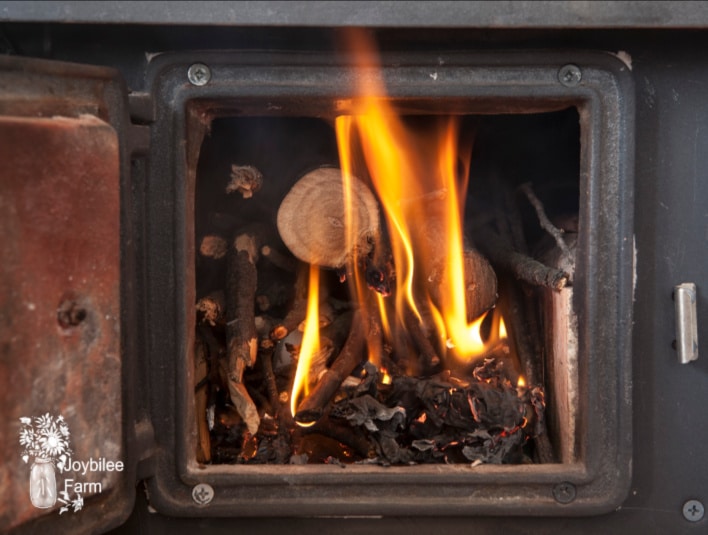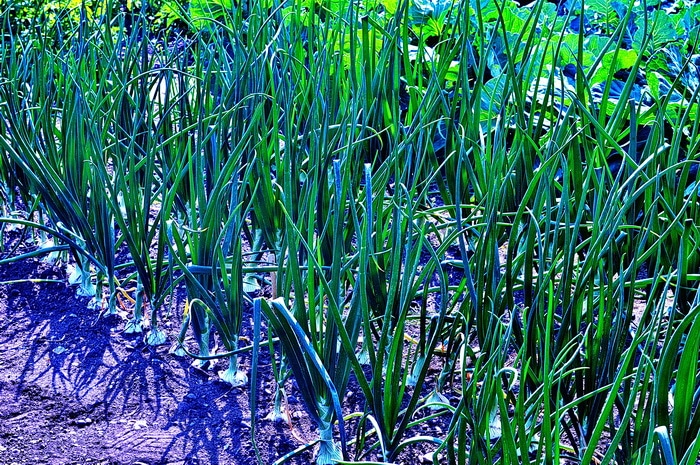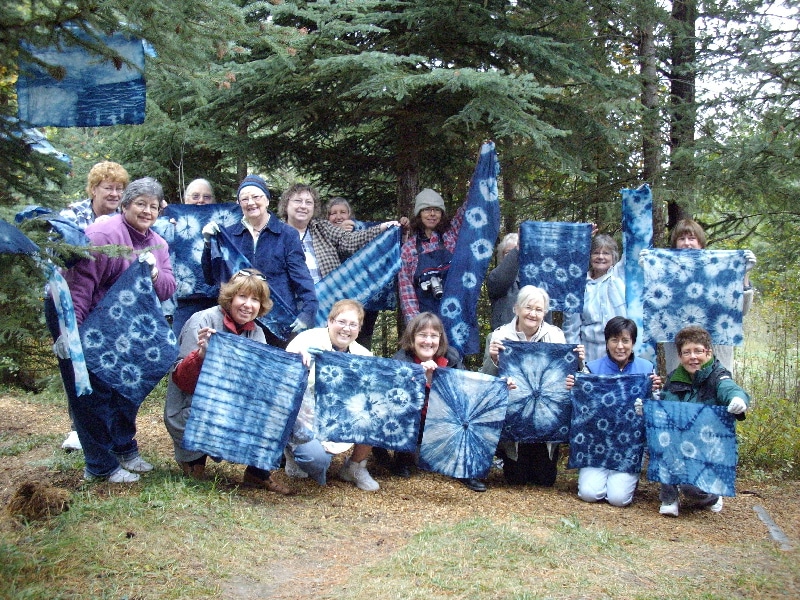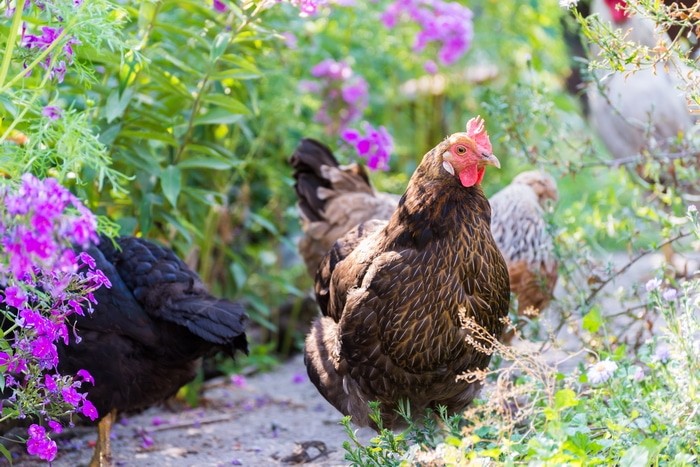If you heat with a woodstove you may wonder what to do with the ashes. They are good for the garden, but also so much more. Explore 9 eco-friendly wood ash uses, to get the most from your woodstove.
Sometimes bad stuff happens to people no matter where they live, but homesteaders may have more resilience than city folk when dealing with crises and catastrophes. Sometimes your dreams become a pile of ashes and your hopes are burnt up in circumstances. As a homesteader, you’ll deal with winter storms, wolves at the door, stock market crashes, relationship failures, sickness, and loss. Sometimes it seems like all you have left are the ashes. That sucks.
In 2011, Lionbrand published the story of Gregory Patrick, a jobless, homeless man who is supporting himself by knitting teddy bears and writing books. Gregory is honest about his struggles to survive. He writes a blog. He volunteers at his neighborhood church thrift store. And he knits wool teddy-bears for sale. From the leftover yarn, he knit himself a blanket and meeting his own needs, with his own hands. Gregory has taken the ashes of his job-loss and homelessness and built something that’s worth telling people about.
After Lionbrand published his story on their blog, Gregory sold out of bears in his Etsy store. But Lionbrand provided him with enough yarn to knit 60 bears, so his store was again well stocked. Gregory is not a homesteader, living off the land, but he is a man who is trying to meet his own needs through his own hands. So I mention his courageous story to inspire you.

A life well lived will have ashes
I, too, have ashes in my own life, little girl dreams and hopes that never bore fruit. My childhood played out like a Halloween thriller. Sometimes you want to forget about the failed starts, the unrealized hopes, the love that will never be returned, the abuse, the humiliation, the pain — put it all behind you, hide the brokenness, and forge ahead like it never happened. Someone told me that women who have been sexually abused as children can’t garden, can’t get their hands dirty, can’t feed themselves by growing their own food.
Nonsense, it ain’t true!
Women (and Men) who have survived abuse, neglect, and hardship need empowerment. They need inner healing, too, but they need to be empowered to meet their own needs. To knit a teddy bear and learn to market it on Etsy, for instance. Homesteading, whether rural or urban, is a way to empower yourself, but it’s not the only way. Take the ashes from your life well lived and build something awesome — a lifestyle, a business, a great work of art — and in doing that you will be empowered.
Here are 9 things to do with the ashes from your wood stove.
Ashes aren’t garbage. They are rich in potassium and carbon. Ashes have important uses in the eco-system of a homestead. You should only burn untreated, seasoned wood in your wood stove and if you do, you will be able to benefit from the ashes year-round. Treated wood contains dangerous chemicals like arsenic and petroleum that will release poisonous gases into your home and those poisons also taint the ashes. Don’t burn treated wood indoors.

1. Use ashes, instead of salt, to melt ice on pathways and steps.
Did you know that ashes melt ice? They also add traction to slippery areas. While salt will damage cement and harm shrubs along pathways, ashes increase beneficial potassium in the soil and work as a soil amendment to increase the flowering of shrubs and trees.

2. Use wood ash as fertilizer. Add them to the soil before planting root vegetables like beets, carrots, parsnips, and onions.
Ashes contain potassium which plants need to form strong roots, as well as flowers and fruit. Soil that is high in nitrogen, but low in potassium will produce lots of healthy, green leaves but no fruit below the soil surface. Amend soil with wood ashes to ensure a strong crop of root vegetables. Beets and other root crops can especially benefit from amending the soil with wood ashes.
3. Raise the pH of your indigo dye vat.
While many dye recipes suggest adding lye (sodium hydroxide) to raise the pH of a natural indigo vat, lye is damaging to protein fibers, such as merino wool and silk. In small amounts, lye leaves fibers harsh and brittle. In larger amounts, it completely dissolves the fibers. By using natural wood ashes instead, delicate protein fibers are preserved.

The Grand Forks Sunshine Quilter’s Indigo Workshop
4. Use ashes to keep the pH of your natural fermentation indigo vat stable.
Fermentation vats tend to drop in pH, becoming more acidic as the fermentation works. This natural drop in pH inactivates the indigo vat. In order to keep a natural fermentation vat active, you need to increase the pH of the vat. If the pH of the vat gets too high, the fermentation stops working. Lye is often recommended as a pH shifter, however, even a few grams too much lye can swing the pH dangerously high. Wood ashes are a gentler way to raise the pH of the vat and keep it working. Wood ashes are also the traditional way, making this a great additional way to get the most out of your wood ash uses.
5. Sweeten the outhouse and keep odors away.
Wood ashes are the perfect complement to your outdoor privy. A covered bucket of wood ashes beside the John will encourage regular use. Regular use of ashes sweetens the muck, thereby encouraging proper healthy decomposition. Wood ashes also keep insects out of the pile and keep flies from reproducing. The carbon in the wood ash absorbs odors, too.
6. Keep a box of fine wood ashes in the chicken coop for dust baths.
Chicken love to dust bath. It preens their feathers, keeps mites and lice away, and keeps your chickens healthy and parasite free. Use a box about 12 x 14 about 4 inches deep. Fill it 2 inches full of fine ashes and dry soil in a 50/50 blend. Leave it in a sheltered dry spot, away from chicken droppings (don’t put it under the roost, for instance). Your chickens will use it all winter when the snow prevents normal dust bathing outside.

7. Repel flies and reduce noxious ammonia odors in the barn.
Urine is acidic. The manure is more alkaline, especially if the animals are getting supplemental salt and calcium. Both are high in nitrogen. To encourage the break down of nitrogen and capture it in the bedding, rather than allowing it to escape as nitrous oxide gas, you throw on carbon-rich bedding and sprinkle ashes in the barn, over the bedding. We use a loose straw, but you could use dry leaves, sawdust, or any other carbonaceous material.
When animals are bedded down in an enclosed space for the winter, the volume of their urine can outweigh the volume of their manure creating an acidic environment and an increase in sickly odors in your barn or loafing yard. When this happens a few shovels full of wood ashes clears up the problem. If you don’t have enough ashes for your situation, calcium in the form of dolomite lime will also take care of barn odors.
8. Use ashes along with straw or wood chips to keep soggy, spring pastures from causing hoof rot in your animals.
During periods of heavy spring rain, when the ground is still frozen, the barn yarn can become a slippery slough of manure, sour odors, and hoof rot. Sprinkle ashes on the ground to reduce slipperiness, reduce odors and keep rot causing bacteria under control. Wood chips or straw can also aid your animal’s footing in slippery spring weather and keep their hooves healthy. Another good way to get the most out of yoru wood ash uses is to use them on icy driveways or roads, to reduce the chance of winter homestead accidents.
9. Use them as a slug deterrent.
Slugs thrive in wet, acid environments. They breathe through their exoskeletons. Ashes gum up the works and irritate slugs, who will not want to cross an ash barrier that has been laid down around your garden. Protect your cabbage, broccoli and cauliflower transplants with a 6-inch ring of ashes. The extra potassium that the ashes add to the soil will encourage the vegetable head formation and flower formation, too. Be sure to renew your wood ash uses after heavy rains to keep the benefits going.
Biochar in the garden
Besides wood ashes, you can also use the charcoal from partially burned wood from your woodstove in the garden. See this post on creating biochar (charcoal) specifically to increase the fertility of your garden, as an additional way to get more wood ash uses from your woodstove.
Other Articles in the Wood Burning Series
Best Fire Starter — How to Make Char Cloth
15 Ways to Stay Warm in Winter Without Turning Up the Heat
Wood Heater or Wood Cookstove: How to Choose
12 Practical Reasons Why Cooking with Wood Makes Sense
Best Firewood for Your Wood Stove So You Don’t Need to Keep Feeding the Fire
10 Tips for Choosing the Perfect Wood Cook-Stove
13 Tips to Keep a Wood Cook Stove Functioning at Peak Efficiency
Is Wood Heat Eco-Friendly and Sustainable?
How to light a fire in a wood-stove without getting burned
The Best Firewood Storage Ideas to Keep Your Firewood Dry

BTU of 25 fire wood species chart
Explore the BTU ratings of 25 different firewood species with this downloadable chart and get my best tips for Firewood storage and safety by clicking the pink Free download button below.



I like the uses for woodashes, too bad the counties don’t use ashes instead of salt on the roads.
I burn alot of dead trees and clean up I am always adding the ashes to gardens. keep up the good advice
thanks vr
Excellent post. Very positive way to look at things.
Absolutley first rate and copper-bottomed, gentlemen!